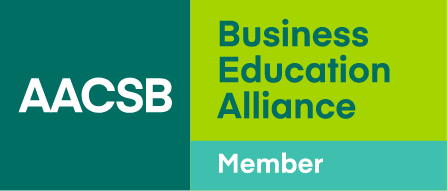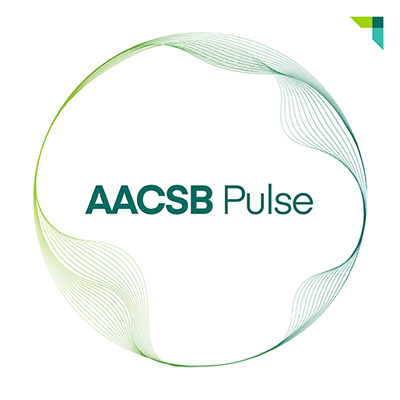Teaching Effectiveness and Impact
Standard 7: Teaching Effectiveness and Impact
7.1 The school has a systematic, multi-measure assessment process for ensuring quality of teaching and impact on learner success.
7.2 The school has development activities in place to enhance faculty teaching and ensure that teachers can deliver curriculum that is current, relevant, forwardlooking, globally oriented, innovative, and aligned with program competency goals.
7.3 Faculty are current in their discipline and pedagogical methods, including teaching diverse perspectives in an inclusive environment. Faculty demonstrate a lifelong learning mindset, as supported and promoted by the school.
7.4 The school demonstrates teaching impact through learner success, learner satisfaction, and other affirmations of teaching expertise.

- Use a pre-defined prompt: click on a prompt listed above the chat field for a quick way to jump in to your conversation.
- Ask your own questions: The AI Assistant can handle complex queries.
- Add detail: copy and paste your content into the chat box. Note that the AI Assistant can respond to anything that can be pasted into the chat box, but can not accept uploaded documents.
- The AI Assistant loves to learn. Use the thumbs-up and thumbs-down buttons to share feedback on responses and add comments when you’d like. All feedback is reviewed by AACSB subject matter experts and may be used to improve the accuracy, clarity, and usefulness of future answers.
- Copy the AI Assistant's answers using the copy button at the bottom of the chat box to paste them into your own document.
- Save and print your conversation using the download button to the right of the chat box near the send button.
Data Model and Use
- The AI Assistant's (Betty) underlying data model is built on a flexible architecture that leverages several advanced AI models, including, but not limited to, OpenAI, Anthropic, and Gemini.
- If you need to reference official AACSB standards or accreditation guidance, please always check the most current policies and documents on AACSB’s website.
- The AI Assistant is a generative AI tool and its responses are not created or reviewed by humans. The AI Assistant should not be relied on for official accreditation decisions or as a substitute for AACSB’s published standards, policies, or guidance. AACSB provides our AI Assistant to assist members in exploring AI use cases and accreditation-related information, but does not guarantee the accuracy or completeness of its responses. Like any generative AI tool, our AI Assistant may provide inaccurate or incomplete information. It is your responsibility to verify important details through AACSB’s official resources or by consulting directly with AACSB staff. By using the AI Assistant, you agree to these Terms of Use.
Does the AI Assistant use my data to train AI?
No. The questions you ask and any text you paste into the AI Assistant are not used to train the underlying AI model. The AI Assistant processes your input in real time to generate a response, but your data does not get fed back into the model.
AACSB may review anonymized, aggregated usage patterns (for example, the kinds of prompts members are using) to help improve the experience and make the AI Assistant more useful. However, your specific queries, conversations, and pasted content remain private and are not used for model training.
Additional Sample AI Prompts
Looking for more inspiration? Below is a list of suggested prompts for you to customize as a starting point for meeting AACSB's accreditation standards. These prompts were generated based on input from our members in 100+ countries and territories and we encourage you to edit them based on your school's unique needs. Get started by copying and pasting a prompt and supporting documentation into AACSB’s AI Assistant or another AI tool or GPT of your choice.
|
Use Case
|
Data Needed
|
Prompt
|
|---|---|---|
|
Evaluate the curriculum of a specified degree program, comparing it to industry trends. Identify gaps where the curriculum does not appear to be current. Identify which faculty are assigned to courses where gaps exist and suggest ways to gain additional expertise for each faculty member.
|
Curriculum of programs to be evaluated, course schedules, faculty assigned to courses, faculty research/teaching expertise, faculty professional development activities, feedback from stakeholders on curriculum (if any).
|
Considering the data provided on the current curriculum, including required courses and electives, course schedules indicating when courses are offered, faculty expertise and their assignment to courses, and stakeholder feedback, evaluate the currency of the curriculum as a whole. For reference, compare the curriculum to news articles about the knowledge and skills required by business graduates. Benchmark the curriculum against our peer institutions.
|
|
Evaluate topical coverage in individual required and elective courses in the curriculum
|
Listing of courses, with the following for each course: required or elective, course description, student learning outcomes, and topical coverage
|
Considering the provided data on courses, including whether the course is a required course or an elective, the course description, student learning outcomes, and topics covered, provide an analysis of the relevancy of the topical coverage and student learning outcomes for required and elective courses. Identify areas of strength and suggest opportunities for improvement.
|
|
Use Case
|
Data Needed
|
Prompt
|
|---|---|---|
|
Provide a report that identifies faculty professional development activities consistent with demonstration of a lifelong learning mindset
|
Faculty vita, faculty annual reports, identification of teaching related professional development activities, other evaluation material available at the school
|
Considering the data provided on faculty, analyze the extent to which faculty demonstrate continuous improvement in teaching. Identify areas of strength and suggest opportunities for improvement.
|
|
Use Case
|
Data Needed
|
Prompt
|
|---|---|---|
|
Prepare a report that identifies faculty excellence in teaching for the past 6 years (consistent with 6-year CIR cycle)
|
For each faculty member, data on teaching awards, student evaluations, new courses developed, student sentiment analysis, alumni feedback (if available), pedagogical publications, textbooks or teaching materials written
|
Using the provided data on faculty teaching effectiveness, generate a report identifying areas of strength and opportunities for improvement as they relate to faculty teaching effectiveness.
|
|
Evaluation of teaching impact using measures other than AOL
|
Pre- and post- self-assessments of learner acquisition of knowledge and skills related to course content, peer evaluations of course content, instructor self-reflection and identification of continuous improvement efforts in courses taught, LMS data on student engagement and participation in courses, course retention rates, post-course student performance for courses that are pre-requisites to other courses, skill development as students progress through the curriculum
|
Considering the provided data on teaching impact measures, generate a report noting strengths and opportunities for improvement on a course-by-course basis, given the objective of demonstrating teaching effectiveness and impact.
|
We are always learning.
Your feedback helps the larger AACSB community by helping us improve prompts and create new use cases.
Have a question?
Email our team





